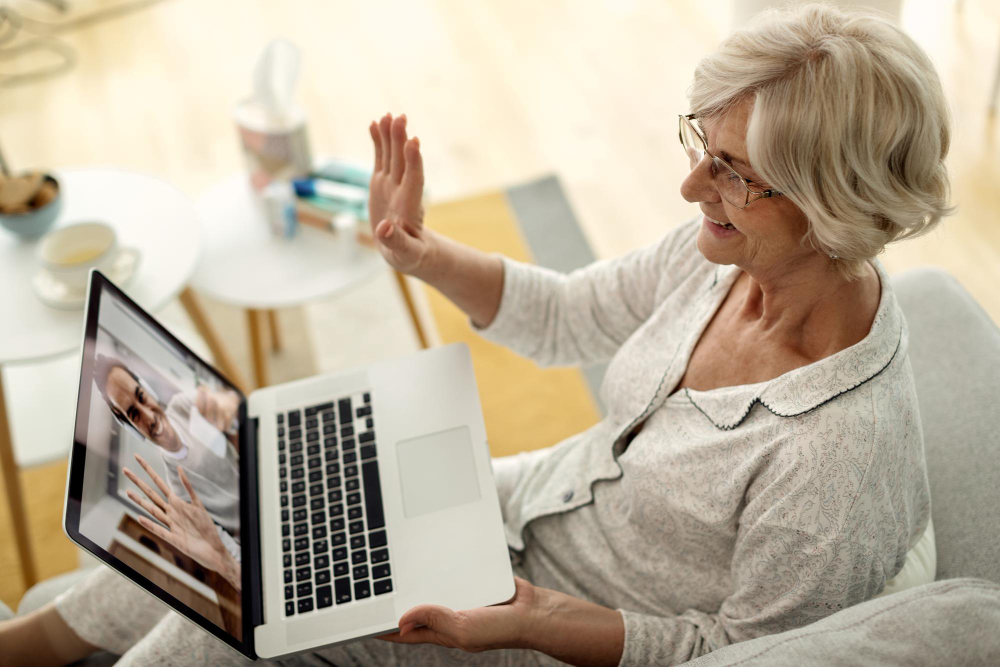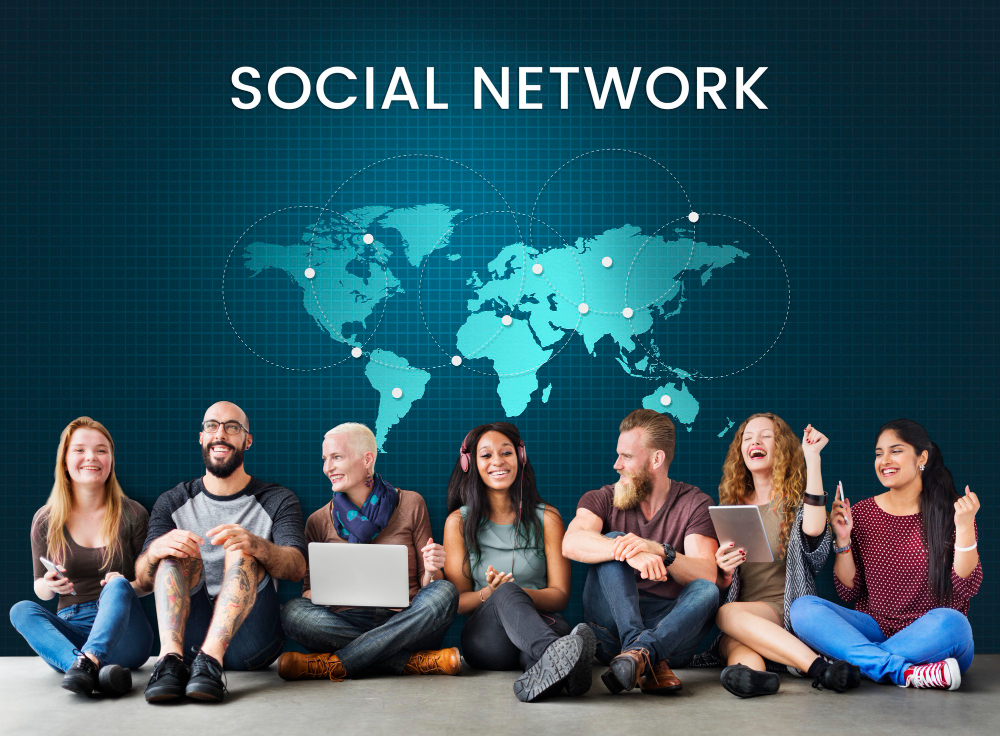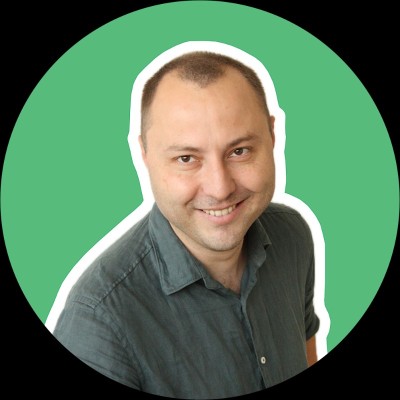Suitcases roll, jobs move, kids leave for university, couples start over in new countries. Some people are displaced and rebuild in safer places. Distance is normal, and that is okay. What also needs to be normal is knowing that our parents and grandparents are safe, connected, and supported today, not only on holidays. The right elderly care app takes that constant background worry and turns it into a simple rhythm: a quick morning check-in, a nudge when pills are due, a calm alert when something looks off, and an easy way to call the right person the first time. Families see the same picture without a dozen messages. Care stops feeling like a second job.
Think about the tiny gaps that open during a week. A blood-pressure pill gets missed. A slippery kitchen step almost leads to a fall. A lonely afternoon stretches because rain kept everyone indoors. A doctor visit moves to “next month.” None of these is an emergency until it is. Software cannot replace family, yet it can remove friction so care actually happens: reminders that respect nap time, an SOS that reaches a nearby neighbor before it calls your phone, a video call that connects on the first try, a plan the whole circle can follow.
The most helpful iOS Android elder care app keeps independence front and center, makes help one tap away, and shares just enough context with family or professionals so there is no drama and no guessing.
The “Did I take it?” spiral. Blood pressure in the morning, diabetes at lunch, thyroid at night. It adds up quickly. A medication reminder app with a clear pill organizer nudges at the right time, records reality (taken, skipped, snoozed) and shows a calm status to the family: “all set today.”
The wander loop. Early memory loss can mean long walks without a plan. GPS safe zones mark “home,” “park,” and “shop” as trusted bubbles. If someone steps outside at night, a respectful alert suggests a friendly call, not a panic. A gentle dementia support app can add routine prompts like “turn left at the bakery.”
The long clinic day. Transport, check-in, waiting rooms, forms. Appointment reminders bundle time, address, prep steps, and a one-tap ride link. If energy is low, a telehealth app slot appears. No shame, just an easy reschedule and a note to the caregiver dashboard.
Numbers that drift. Pressure and glucose wobble before they crash. A blood pressure tracker and glucose tracking sync from a cuff or meter, while anomaly detection AI looks for change rather than perfection and nudges early: “numbers trending higher this week.”
Lonely Sundays. Loneliness hurts health. Video call one tap reaches family, a faith group, or a local volunteer. Pair that with a wellness check in - a daily “How are you?” with mood and energy—and suggest a short chat when the pattern dips.

Think about the tiny gaps that open during a week. A blood-pressure pill gets missed. A slippery kitchen step almost leads to a fall. A lonely afternoon stretches because rain kept everyone indoors. A doctor visit moves to “next month.” None of these is an emergency until it is. Software cannot replace family, yet it can remove friction so care actually happens: reminders that respect nap time, an SOS that reaches a nearby neighbor before it calls your phone, a video call that connects on the first try, a plan the whole circle can follow.
Why this hurts now, and how an app can help
Families are spread across cities and time zones. Parents don’t want to “bother” their kids; kids feel guilty for asking again. A modern senior companion app lowers the social cost. One tap says “I’m okay,” not a long text. A family caregiver app shows the week (meds taken, steps walked, meals logged) without turning life into paperwork. Support should be simple, not a maze of settings.The most helpful iOS Android elder care app keeps independence front and center, makes help one tap away, and shares just enough context with family or professionals so there is no drama and no guessing.
Real cases your product can cover from day one
A quiet fall that no one saw. Evening slip in the bathroom, no one nearby. With fall detection on a watch or phone, the app checks in gently. No response, it escalates: first the neighbor, then family, then local services. Location sharing with consent and medical notes travel with the alert so the right help arrives fast. A well-built SOS alert app saves minutes that matter.The “Did I take it?” spiral. Blood pressure in the morning, diabetes at lunch, thyroid at night. It adds up quickly. A medication reminder app with a clear pill organizer nudges at the right time, records reality (taken, skipped, snoozed) and shows a calm status to the family: “all set today.”
The wander loop. Early memory loss can mean long walks without a plan. GPS safe zones mark “home,” “park,” and “shop” as trusted bubbles. If someone steps outside at night, a respectful alert suggests a friendly call, not a panic. A gentle dementia support app can add routine prompts like “turn left at the bakery.”
The long clinic day. Transport, check-in, waiting rooms, forms. Appointment reminders bundle time, address, prep steps, and a one-tap ride link. If energy is low, a telehealth app slot appears. No shame, just an easy reschedule and a note to the caregiver dashboard.
Numbers that drift. Pressure and glucose wobble before they crash. A blood pressure tracker and glucose tracking sync from a cuff or meter, while anomaly detection AI looks for change rather than perfection and nudges early: “numbers trending higher this week.”
Lonely Sundays. Loneliness hurts health. Video call one tap reaches family, a faith group, or a local volunteer. Pair that with a wellness check in - a daily “How are you?” with mood and energy—and suggest a short chat when the pattern dips.

Design that respects age and dignity
Big, readable text is not a feature; it is a relief. A voice first UI lets someone say “Call my daughter” or “Mark pills done” without hunting for buttons. Large fonts accessibility, strong contrast, and offline mode serve rural areas and older devices. With wearables, Apple Watch integration and Android wearable integration fit real routines: a quiet tap at pill time, a glance for steps, a long-press for help.Privacy should feel visible. No hidden tracking, no surprise sharing. Privacy first design means clear consents, data encryption for apps, and simple exports so a clinic can see only what it needs. If your market requires it, aim for HIPAA-style privacy in the U.S. and GDPR compliant app behavior in the EU, then explain settings in plain language.
One place for the whole circle of care
Care is teamwork: family, neighbors, nurses, sometimes a home-care agency. A caregiver dashboard lays out today’s plan on one screen (meds, meals, visits, mood) so everyone knows where they can help. A caregiving schedule assigns small tasks that actually happen: “Check in after lunch,” “Bring groceries Friday.” When someone needs a break, respite care coordination suggests local options and hands off cleanly.If professionals are involved, a home care agency app or senior living app view gives staff the right tools: shift handoffs, notes, quick vitals, and a safe channel to families. Payments can stay simple through payment gateway integration, with clear receipts and limits.
Proof from social and healthcare work
We spend a lot of our time in social app development and Healthcare app development, which is why the flows above are practical, not theoretical. Three quick case snapshots:- Case 1 — secure voice chat at scale. We supported a long-running social product through several key shifts: a WebRTC transition for calls, modern messaging, and a calmer, clearer UI. Work spanned iOS and Android with Flutter + native pieces. That experience shaped our approach to safe, low-friction communication and community tools you can trust.
- Case 2 — one place for personal health. A consumer health app that tracks body systems, adds a food diary, supports doctor messaging, schedules appointments, and shares data when needed. Built on iOS and Android with a FastAPI backend and a modern web admin. The lesson for elder care: make the picture simple and sharing easy.
- Case 3 — blood results people can actually use. We designed and built a full system that tracks 100+ blood biomarkers, calculates biological age, sends notifications for new results and upcoming visits, and provides a clinician admin for tracking and insights. Flutter apps, FastAPI backend, Auth0, and targeted integrations. This is how remote monitoring app data turns into clear decisions.
These projects taught us what matters most: clear copy, offline truth, alerts that reach the right person, and privacy settings anyone can understand.
How this becomes a business with heart
Families pay for calm. Agencies pay for time saved. Insurers care about fewer hospital visits. Your product can serve all three without gimmicks. Direct-to-family plans can keep core features free and offer calm upgrades (shared dashboard, more video call one tap, longer history). Care teams can use per-staff pricing for scheduling, notes, and remote monitoring app views. Partners can run clinic or insurer pilots tied to one measured outcome (adherence, fewer ER trips) proving value with analytics and telemetry for apps.
Under the hood with Olearis
Olearis builds the unglamorous parts that make care feel gentle on the surface. We are an app development company with strong mobile app development craft across iOS mobile development, Android mobile development, and cross platform app development. We pair design empathy with solid engineering so features work on a quiet Sunday and during a storm.- Local-first sync keeps check-ins, meds, and notes working offline, then merges safely later.
- Reliable alerts route through push, SMS, or call so an SOS alert app reaches someone even if one channel fails.
- Wearables integration brings heart rate, step counts, and fall signals without draining the battery.
- With Healthcare app development patterns, data stays minimal, encrypted, and auditable; retention fits family comfort and local rules.
- A scalable backend supports many families and agencies, with roles and logs that earn trust.
- AI integration for apps looks for useful patterns. Anomaly detection AI triggers a check-in before a crisis, not after.
What your first year can look like
Start simple and useful. Month one, launch an MVP that closes real gaps: medication reminder app, wellness check in, video call one tap. Next, add fall detection hooks and GPS safe zones for families who opt in. Then ship clinic-friendly exports and basic telehealth app slots with popular providers. By year end, your remote monitoring app supports a couple of wearables, numbers roll into the caregiver dashboard, and agencies can run a pilot with clear outcomes. Avoid feature sprawl. Build the few flows people touch every day and make them delightful.Why partner with Olearis
Care is delicate. You need a team that builds like engineers and thinks like family. At Olearis we turn complex flows into gentle defaults: meds confirmed with one tap, help that reaches the right person, privacy that is obvious, and screens that feel like a friend is guiding you. We bring product discovery, UX writing, Olearis app development across platforms, secure backends, and steady analytics and telemetry for apps so quality improves week by week. If your vision is to stay close even from far away, we will help you ship a senior companion app that families trust, agencies rely on, and elders enjoy using.



